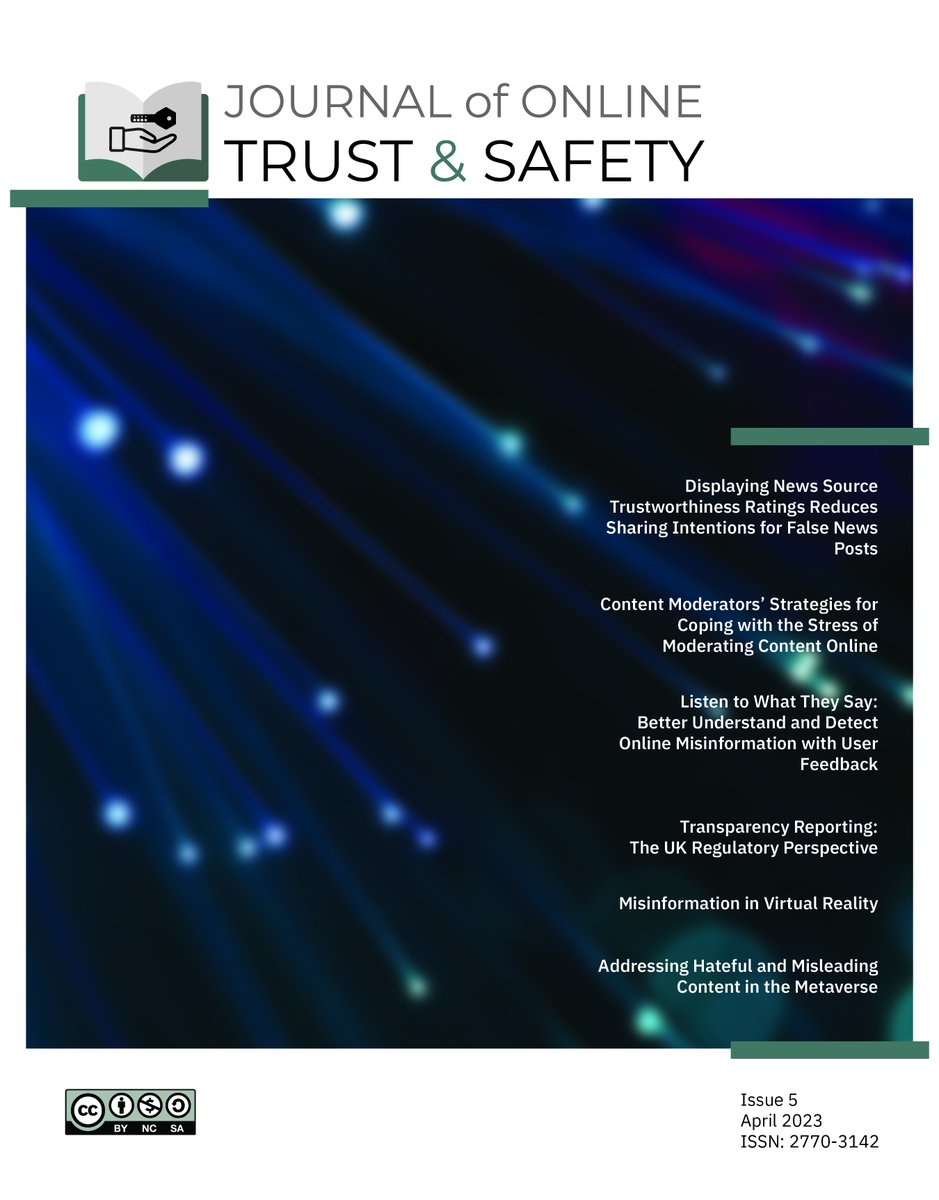
Stanford Internet Observatory
@stanfordio
Followers
14K
Following
123
Media
52
Statuses
529
The Stanford Internet Observatory is a cross-disciplinary program studying the abuse of the Internet and providing thoughtful policy and technical solutions.
Stanford, CA
Joined February 2020
RT @issielapowsky: NEW: Researchers at @thorn and @stanfordio are out with a new paper on the rise in AI-generated child sexual abuse mater….
nytimes.com
A.I. companies have an edge in blocking the creation and distribution of child sexual abuse material. They’ve seen how social media companies failed.
0
31
0
RT @StanfordCyber: 🎟️Tickets are on sale for @stanfordio Trust and Safety Research Conference, to be held September 28-29, 2023. Lock in ea….
0
2
0
RT @StanfordCyber: .@stanfordio's recent investigation of platforms identified large networks of accounts, purportedly operated by minors,….
theguardian.com
The Stanford Internet Observatory documented how a web of social media accounts advertises and distributes abuse materials
0
9
0
This work requires sustained, meaningful investments in Trust & Safety teams given the significant harms. We'll continue to work with platforms to improve detection & prevention of risks to child safety, both directly and in concert w/ @missingkids & @tech_coalition. 7/7.
1
1
15
We found the scope of commercial SG-CSAM is extensive. Sellers are often familiar with audience growth and ban evasion techniques. Instagram is by far the most popular platform, but this is a widespread issue. 3/7.
wsj.com
The Meta unit’s systems for fostering communities have guided users to child-sex content; company says it is improving internal controls.
3
10
27
We carefully gathered public data to study this network. Sensitive media content was processed automatically, reported to @missingkids if tools detected it as CSAM, and discarded. 2/7.
1
3
15
New SIO report out today on self-generated child sexual abuse material (SG-CSAM). A tip from @WSJ led to an investigation revealing a large network of what appeared to be underage users producing, marketing and selling explicit content. 1/7.
cyber.fsi.stanford.edu
A Stanford Internet Observatory investigation identified large networks of accounts, purportedly operated by minors, selling self-generated illicit sexual content. Platforms have updated safety...
7
41
60
In the course of conducting a large investigation into online child exploitation, the Stanford Internet Observatory discovered serious failings with the child protection systems at Twitter. 1/6.
New: Twitter failed to prevent dozens of known images of child sexual abuse from being posted on its platform in recent months, according to researchers who said Twitter has since appeared to resolve the issue via @WSJ.
18
151
321
New work from our postdoc @RERobertson out in @Nature today on how people interact with news on Google Search 🧵👇.
New paper out today in Nature on how people interact with partisan and unreliable news on Google Search. With @_Jon_Green,@damianjruck, @Ognyanova, @bowlinearl, and @davidlazer.
2
6
7
RT @goodformedia: How can we re-design social media to better support #youthmentalhealth? Youth shared their ideas directly with industry r….
0
3
0
RT @StanfordCyber: AI is not very good at interpreting nuance and context, says @noUpside of @stanfordio. "It’s not possible for it to enti….
technologyreview.com
Why haven’t tech companies improved at content moderation?
0
7
0









